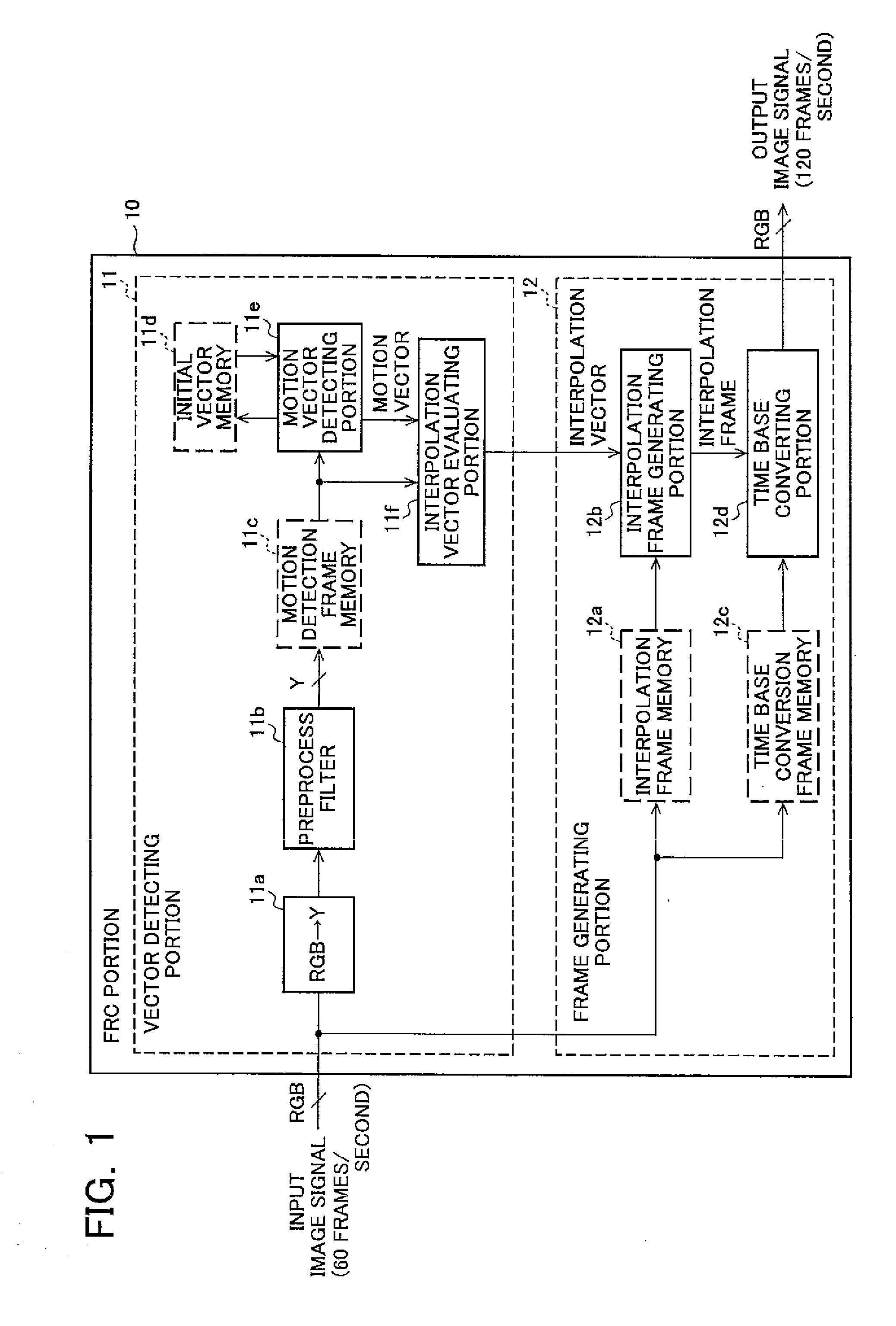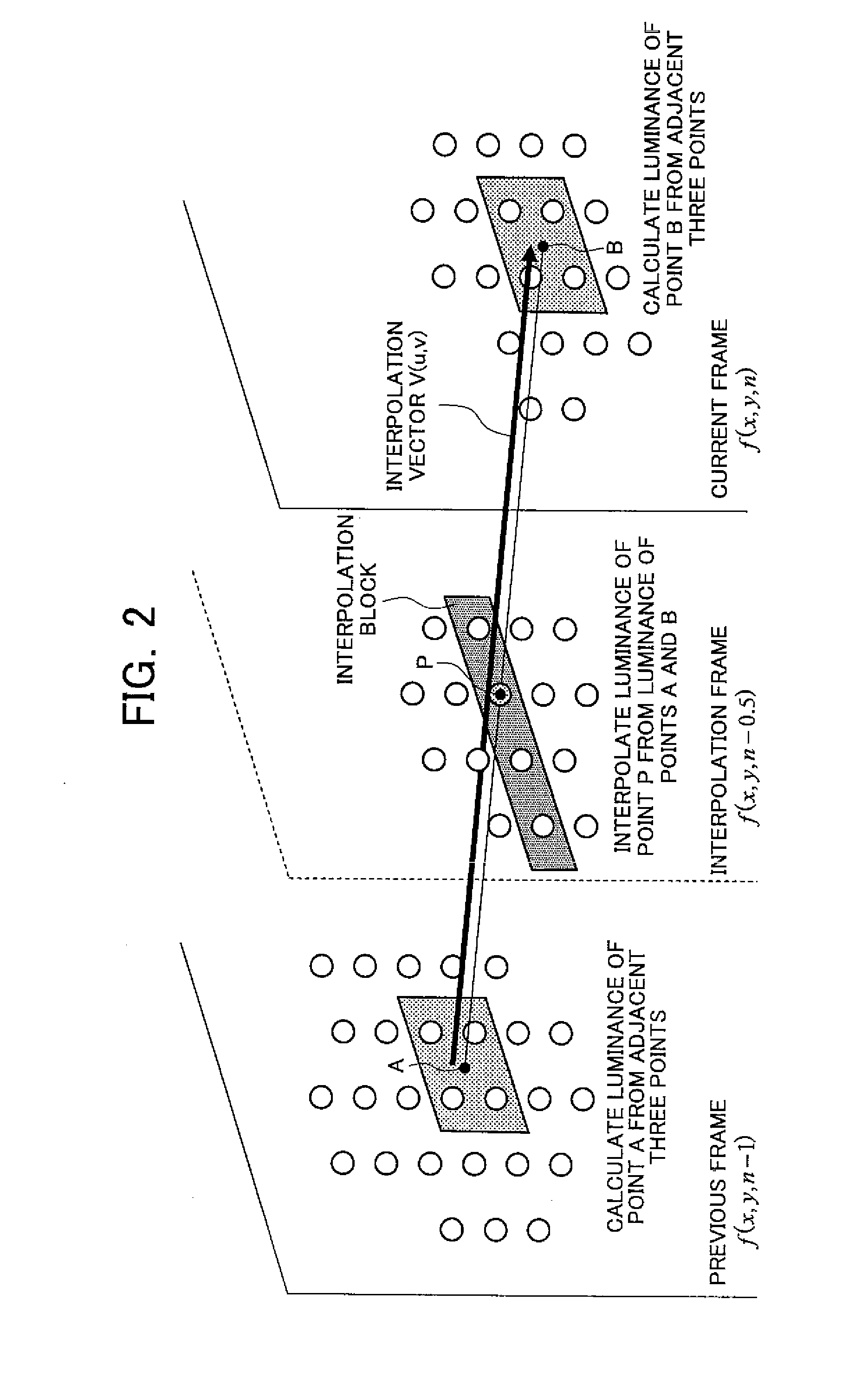Image display device and method
a technology of image display and image, which is applied in the field of image display devices and image displaying methods, can solve the problems of motion blur, motion blur, and the drawback of lcds (liquid crystal displays), and achieve the effect of effective prevention of image quality deterioration
- Summary
- Abstract
- Description
- Claims
- Application Information
AI Technical Summary
Benefits of technology
Problems solved by technology
Method used
Image
Examples
fifth embodiment
[0161]In a fifth embodiment of the present invention, a path is provided to bypass the FRC portion 10; it is assumed that the first image signal is, for example, the television image signal acquired by receiving broadcast and that the second image signal is, for example, the character signal such as OSD; and when both image signals are combined (overlapped) and displayed, the input image signal overlapped with the character signal is input to the path to change the drive frequency of the liquid crystal display panel 19 in conformity with the frame frequency of the input image signal. That is, if the image signal overlapped with the character signal is input, the switching is performed such that the input image signal overlapped with the character signal is directly displayed and output on the liquid crystal display panel 19 without performing the frame rate conversion.
[0162]FIG. 7 is a block diagram of an exemplary main configuration of a liquid crystal display device according to t...
sixth embodiment
[0168]In a sixth embodiment of the present invention, a path is provided to bypass the FRC portion 10; it is assumed that the first image signal is, for example, the television image signal acquired by receiving broadcast and that the second image signal is, for example, the sunscreen image signal such as PinP; and when both image signals are combined (overlapped) and displayed, the input image signal overlapped with the sub-screen image signal is input to the path to change the drive frequency of the liquid crystal display panel 19 in conformity with the frame frequency of the input image signal. That is, if the image signal overlapped with the sub-screen image signal is input, the switching is performed such that the input image signal overlapped with the sub-screen image signal is directly displayed and output on the liquid crystal display panel 19 without performing the frame rate conversion.
[0169]FIG. 9 is a block diagram of an exemplary main configuration of a liquid crystal d...
seventh embodiment
[0174]In a seventh embodiment of the present invention, a path is provided to bypass the FRC portion 10; it is assumed that the first image signal is, for example, the television image signal acquired by receiving broadcast and that the second image signal is, for example, the character signal such as OSD; and when both image signals are combined (overlapped) and displayed, the input image signal overlapped with the character signal is input to the bypass path to accumulate the input image signal in a memory on the path and the frame rate is converted by rapidly and repeatedly reading the image signal of the same frame from the memory more than once. That is, if the image signal overlapped with the character signal is input, the switching is performed such that the input image signal is rapidly and sequentially output to convert the frame rate and is displayed and output on the liquid crystal display panel 19 without performing the motion-compensated frame rate conversion.
[0175]FIG....
PUM
 Login to View More
Login to View More Abstract
Description
Claims
Application Information
 Login to View More
Login to View More - R&D
- Intellectual Property
- Life Sciences
- Materials
- Tech Scout
- Unparalleled Data Quality
- Higher Quality Content
- 60% Fewer Hallucinations
Browse by: Latest US Patents, China's latest patents, Technical Efficacy Thesaurus, Application Domain, Technology Topic, Popular Technical Reports.
© 2025 PatSnap. All rights reserved.Legal|Privacy policy|Modern Slavery Act Transparency Statement|Sitemap|About US| Contact US: help@patsnap.com



